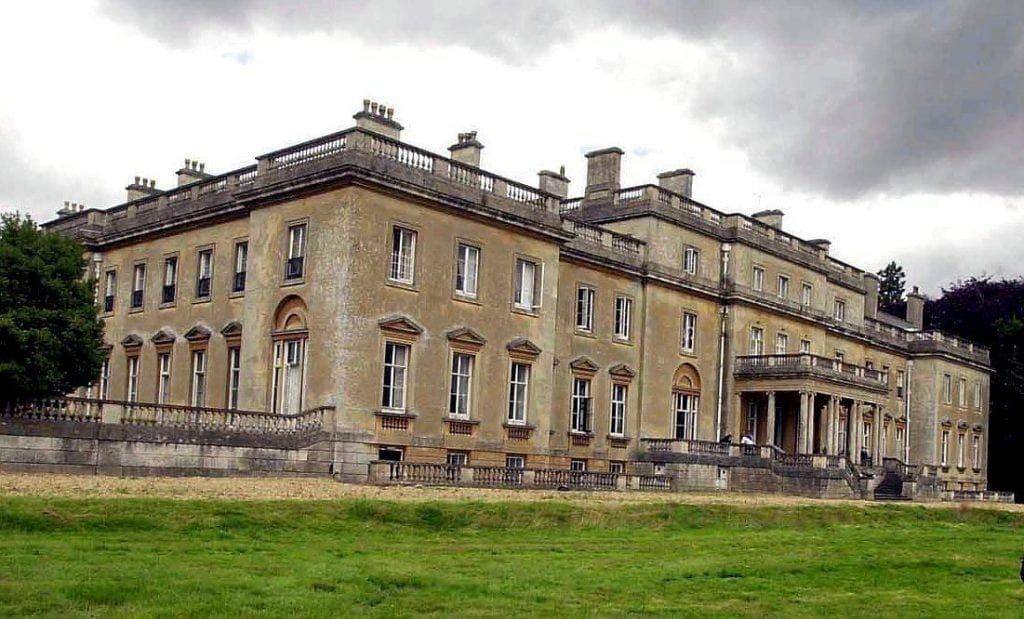A historic but dilapidated country estate is set to become one of the world’s finest mansions are plans were approved for a dazzling restoration.
Only the world’s billionaires are likely to be able to carry out the work on Tottenham House, a Wiltshire residence which is around 100 TIMES the size of the average family home.
It is steeped in history, dating back more than 900 years to the Norman Conquest, but
the Grade I Listed mansion and its grand outbuildings, which were part of the Earl of Cardigan’s ancestral estate, are now rundown following years of neglect.
The estate was sold in 2014 for £11.25 million to an unnamed buyer and extravagant plans were last year submitted to Wiltshire Council to return the rundown pile to a single residence for the first time in more than 70 years.
And with more than 90,000sq/ft of floorspace, the mansion will be of such opulence and scale that it is anticipated that 69 staff would be required to run it at a cost of more than £3 million PER YEAR.
Wiltshire Council approved the plans on Thursday evening – paving the way for an extraordinary restoration.
On top of reviving the main residence, the derelict stable block will be transformed into staff accommodation, a banqueting house would be built and a lake and cricket pitch would be installed in the grounds.
A planning report states: “The proposed scheme will make Tottenham House one of the very best private residences in the world, with facilities unlike anything available anywhere else.
“To succeed it must be exceptional with the widest possible appeal to those with the greatest financial means.
“The pool of potential buyers at any one time will, however, be highly limited.”
Savills estimates when completed, Tottenham House will require 69 members of staff, including butlers, nannies, housekeepers, chauffeurs, pilots and security staff.
Staff wages are expected to be around £1.7 million per year and it will cost £172,500 alone to heat the mansion.
It will be operated on the same scale as a mid-sized hotel and around 25 staff would have to live permanently on site.
A spokesperson for Turley, which worked on the proposals, said: “We have always firmly believed that the best, indeed the only, way to achieve the restoration of Tottenham House and Estate is to ensure once again that the House serves its original purpose as a single-family home.
“We are delighted that the committee supports us on this vision and has resolved to grant permission for this project of national importance.”
Plans show the lower ground floor will be dedicated to leisure and maintenance, boasting a pool, billiard room, cinema, bar and spa along with a number of offices, staff rooms, kitchens and laundry rooms.

The ground floor will be for entertaining – with a grand dining room, drawing room, living room, library, winter garden and enormous halls. The orangery will be transformed into a ‘state dining room’.
Upstairs will be the living quarters, which will consist of a staggering master bedroom suite that includes his and her bedrooms, his and her bathrooms and his and her dressing rooms.
In total there will be eight bedroom suites, all boasting dressing rooms and bathrooms.
The third floor will house the staff bedrooms and numerous office rooms.
On top of the restorations, new build accommodation is also planned along with new stables, an indoor/outdoor riding school and a swimming pool and tennis pavilion.
Tottenham House, near Marlborough, was part of the Savernake Estate which dates back to the Norman Conquest when it was a Royal Hunting forest.
The first record of a house in the current location was when Henry VIII visited Sir John Seymour at Wolf Hall and members of the Seymour family are said to have stayed at Tottenham Lodge.
Henry VIII met Jane Seymour at Wolf hall, marrying her in 1536. This elevated the family and the estate was passed into the personal ownership of the Seymours in 1547.
The estate passed down the female line of the Seymour family to the Bruce family, who became the Brudenell-Bruces.
The current Earl of Cardigan, David Brudenell-Bruce lost, lost ownership of the house in 2014 following a legal battle with trustees.
https://www.thelondoneconomic.com/property/pretty-fishing-village-unanimously-votes-against-second-homeowners/17/06/
https://www.thelondoneconomic.com/news/environment/plans-to-build-new-student-flats-have-been-axed-as-historic-city-pub-is-saved/13/06/

